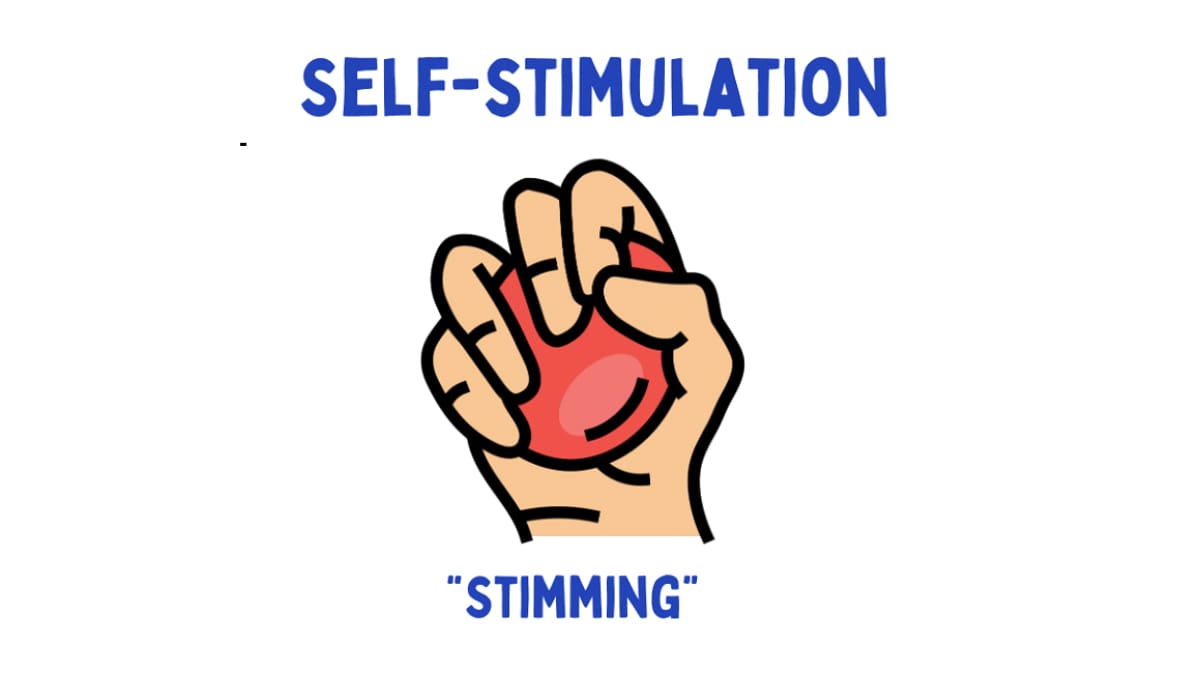
Types Of Self-Stimulation Behaviors
Stimming can include one or multiple of the sensory systems- auditory, vision, olfactory, vestibular, tactile, and proprioception. Stimming is not a bad thing, so the behaviors should not be stopped, possibly modified if self-injurious. Attempting to stop stimming can cause more dysregulation and meltdowns. Below is a breakdown of some common stimming behaviors associated with each sensory system but self-stimulation behaviors can be unique to each individual based on sensory needs.
Visual Stimming
Visual stimming involves repetitive movements or behaviors that focus on visual input. Children that visually stim are often seeking out visual input that they have control over due to overstimulation in the environment and/or as a self-soothing mechanism. Common examples of visual stimming include:
- Hand-flapping: rapidly waving or flapping hands in front of the eyes
- Finger-flicking: quickly flicking fingers in front of the eyes or near the face as well as staring at fingers as they move
- Staring at lights or spinning objects: Fixating on lights, shadows, or objects that spin or move in a repetitive manner.
- Repetitive flickering of lights on and off
- Lining up objects like toy cars, blocks, and more
Auditory/Vocal Stimming
Auditory/vocal stimulation involves repetitive behaviors related to hearing or producing sounds for the purpose of self-stimulation. For example, this could be repeating words, phrases, or vocal patterns heard from their favorite television show/movie, song, or person. Additional examples of auditory/vocal stimming include:
- repetitive vocalizations like humming, whistling, or throat-clearing
- repeatedly playing their favorite video
- tapping/banging objects
- clicking sounds with an object or their mouth.
Object Stimming
Object stimming involves repetitive interactions with objects or items. Common examples of object stimming include:
- Spinning objects: Rotating or spinning objects such as wheels, tops, or toys.
- Fidgeting with objects: Manipulating small items such as coins, keys, or buttons.
- Lining up or arranging objects: Organizing objects in straight lines or specific patterns.
Vestibular/Movement Stimming
Vestibular/movement stimming involves repetitive movements that provide input to the vestibular system, which contributes to balance and spatial orientation. Common examples of vestibular/movement stimming include:
- rocking back and forth to regulate sensory input
- spinning in circles to stimulate the vestibular system
- repetitive jumping/bouncing for sensory feedback.
Tactile/Proprioceptive Stimming
Proprioceptive stimming involves repetitive movements that provide input to the muscles and joints, contributing to body awareness and sensory regulation.Tactile stimming involves repetitive behaviors that focus on touch or tactile sensations. Examples include:
- Rubbing or stroking surfaces: Running hands over textures or surfaces for sensory feedback.
- Hand-wringing: Twisting or wringing hands together in a repetitive motion.
- Skin-picking or scratching: Engaging in repetitive scratching or picking at the skin.
Olfactory Stimming
The olfactory sensory system relates the sense of smell and taste that allows individuals to perceive odor to help navigate environments and items in daily routines. Familiar smells can provide a sense of comfort and security. New smells can also be a great way to explore and engage with an environment. Olfactory self-stimulation behaviors may look like the following:
- Sniffing objects that may be unusual to smell or foods
- Licking/chewing items
Since most self-stimulation behaviors are not harmful and can be calming for the neurodiverse population, we do not want to diminish them. Our goal is to spread awareness, provide support and sometimes redirect when needed. We can do this using tools such as pull tubes, squeezing putty, pop its, and many more. Your therapist can help determine what sensory system the stimulation behavior is fulfilling to make sure the child’s sensory needs are being met to help with self-regulation with daily activities.
